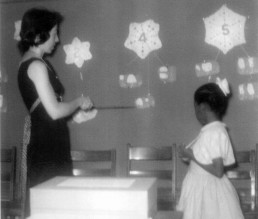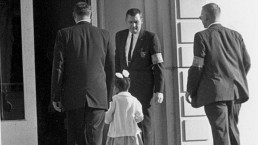"Once I got in the school all of these people rushed inside the building. They were taking out their children. Over 500 kids walked out of school that day."
Ruby Bridges was the first African-American child to desegregate William Frantz Elementary School in New Orleans, Louisiana on 14 November 1960.
Her parents responded to a request from the National Association for the Advancement of Colored People (NAACP) and volunteered her to participate in the integration of the New Orleans school system. Ruby was one of six black children in New Orleans to pass the test that determined whether they could go to the all-white school. Two of the six decided to stay at their old school, Bridges went to Frantz by herself, and three children were transferred to McDonogh No. 19 and became known as the McDonogh Three. Bridges and her mother were escorted to school by four federal marshals during the first day that Bridges attended William Frantz Elementary. In the following days of that year, federal marshals continue to escort Bridges.
As soon as Bridges entered the school, white parents pulled their own children out; all the teachers except for one refused to teach while a black child was enrolled. Only one person agreed to teach Bridges and that was Barbara Henry, from Boston, Massachusetts, and for over a year Barbara taught Ruby alone. That first day, Bridges and her mother spent the entire day in the principal’s office; the chaos of the school prevented their moving to the classroom until the second day. On the second day, however, a white student broke the boycott and entered the school when a 34-year-old Methodist minister, Lloyd Anderson Foreman, walked his five-year-old daughter Pam through the angry mob, saying, “I simply want the privilege of taking my child to school …” A few days later, other white parents began bringing their children, and the protests began to subside. Yet, still, Bridges remained the only child in her class, as she would until the following year. Every morning, as Bridges walked to school, one woman would threaten to poison her, while another held up a black baby doll in a coffin; because of this, the U.S. Marshals dispatched by President Eisenhower, who were overseeing her safety, allowed Bridges to eat only the food that she brought from home.

